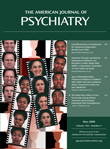Little did I know the morning I received this book that I would be spending the night on the neurosurgical unit with a friend who was exhibiting the cardinal signs of confusion, amnesia, and confabulation. In the hope of enlightenment and wanting so very much to encourage his wife and family, I began rather urgently to read. I was not disappointed.
What happens when an individual who cannot remember events contrives a fictitious account he or she believes to be true? The process of confabulation—unintentional false memory production in cerebral disease states—has intrigued psychiatrists and neurologists for more than a century as a potential key to unlocking the mysteries of human memory and imagination. In this 344-page book, Professor Armin Schnider explores the various clinical presentations and etiologies of confabulatory states and then extrapolates processes by which healthy individuals might create reality for themselves. Throughout the book, the author draws upon his extensive clinical and research experience within the field of neurorehabilitation, an area sadly overlooked by many modern-day health care systems, to produce an authoritative and challenging yet impressively accessible and enjoyable text for anyone interested in the neurobiology of cognition. The chapters are well referenced with a helpful summary at the end of each. The book starts with a memorable case study and subsequent chapters are punctuated by finely drawn clinical vignettes that bring the whole to life.
The first chapters interweave early theories dating back to 1886. Russian psychiatrist Sergei Korsakoff first drew attention to the eponymous syndrome, though the term “confabulation” (from the Latin confabulari, meaning “to gossip”) as a description of “the emergence of memories of events and experience that never took place” was not introduced to the medical literature until around 1900 by Carl Wernicke and Karl Bonhoeffer. Translating eminent works from these and other European luminaries, Schnider demonstrates how experts of the time grappled with this phenomenon in the years before neuroimaging. Clinically relevant confabulation has always been relatively rare (in contrast to amnesia). Most patients had chronic alcoholism, infection, or nutritional malabsorption. Confabulation was soon also described in patients suffering from brain trauma, senile dementia, and later, subarachnoid hemorrhage involving the anterior communicating artery. Tellingly, most current theories (e.g., gap filling, dysexecutive syndrome, monitoring, temporality, constructive deficits, or personality traits) were anticipated on the basis of careful clinical observation alone.
Confabulation does not always occur in the context of brain disease. False memories occurring in healthy people have attracted a largely nonclinical literature, particularly in relation to eyewitness testimony, and Schnider describes how normal memory, under certain conditions, becomes the easy victim of its own associative power. Schnider proceeds to critically appraise current neuropsychological theories of confabulation. Although invariably associated with impaired free recall, information storage, learning, and recognition capabilities may remain intact. Therefore, he argues confabulation need not be associated with a “gap in memory.” According to the author’s work, confabulation is not a unitary disorder and biologically dissociable forms may be identified. Behaviorally spontaneous confabulations, which include distorted elements of real-life past events and result in inappropriate actions, seem to represent an exceptionally direct account of what patients consider to be their reality and constitute a model for how the brain distinguishes between thoughts that do and do not pertain to current circumstance. Functionally critical anatomical areas include Brodmann’s area 13 in the orbitofrontal cortex and the ventromedial cortex. Failure to suppress or filter the interference of irrelevant memories, rather than difficulties storing mnestic information per se, appears the most plausible impairment.
Clinical rehabilitation is challenging, but thankfully most patients improve. Based upon his suppression theory, Schnider advocates minimizing confrontation rather than conventional memory training. Prognosis may depend on the lesion site; in cases with posteromedial orbitofrontal cortex, basal forebrain, or limbic damage, confabulation continued up to 2 years, though most eventually recovered the ability to adapt to ongoing reality and lead relatively independent lives, despite continuing amnesia.
In the last chapters, Schnider marshals evidence from translational studies, including data from animal studies, to develop his hypotheses further. He proposes that in healthy individuals, orbitofrontal-subcortical neurocircuitry is responsible for evaluating and disconnecting irrelevant memories by altering neocortical synchronization. The “reality-confusion” of confabulation represents failure of this preconscious orbitofrontal cortical filter. But how might the orbitofrontal cortex do it? Confabulators adhere to false ideas even when reality is contradictory, suggesting deficient behavioral extinction. The posterior orbitofrontal cortex and its ventral limbic connections are fundamental in coordinating reward and extinction responses. Schnider speculates this reward system extends to monitoring unconscious anticipations and outcomes devoid of hedonic value, acting as a reality check. “Extinction cells,” signaling the absence of reward, are concentrated in area 13. Damage to these cells may cause individuals to lose the ability to adapt their ideas to ongoing reality and act out unrewarding goal-seeking behavior. This final hypothesis awaits controlled exploration. No doubt Professor Schnider is already working on it.

